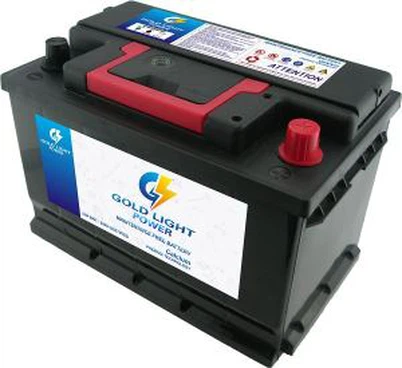What is the float voltage of a Gel Battery?
Leave a message
What is the float voltage of a Gel Battery?
As a dedicated supplier of Gel Batteries, I often encounter inquiries about various technical aspects of these batteries, and one question that frequently comes up is about the float voltage of a Gel Battery. In this blog post, I aim to provide a comprehensive understanding of what float voltage is, its significance for Gel Batteries, and how it impacts their performance and lifespan.
Understanding Float Voltage
Float voltage refers to the constant voltage at which a battery is maintained when it is fully charged and in a standby or trickle - charge state. When a Gel Battery reaches its full charge, instead of disconnecting the charger completely, a small amount of current is continuously supplied at a specific voltage level. This is the float voltage. The purpose of maintaining the battery at the float voltage is to compensate for the self - discharge that occurs over time and to keep the battery ready for use.
The float voltage is crucial because it ensures that the battery remains in a fully charged condition without overcharging. Overcharging can cause significant damage to Gel Batteries. In a Gel Battery, the electrolyte is immobilized in a gel - like substance. Overcharging can lead to the breakdown of the gel structure, causing the battery to lose its ability to hold a charge effectively. It can also generate excessive heat and gas, which may result in the battery swelling or even rupturing.
Ideal Float Voltage for Gel Batteries
The ideal float voltage for Gel Batteries typically ranges between 2.25 to 2.30 volts per cell at 25°C (77°F). Since most common Gel Batteries are 12 - volt batteries, which consist of six cells connected in series, the overall float voltage for a 12 - volt Gel Battery should be between 13.5 to 13.8 volts at 25°C.
It's important to note that the float voltage is temperature - dependent. As the temperature increases, the float voltage should be decreased, and vice versa. For every 1°C increase in temperature above 25°C, the float voltage should be reduced by approximately 3 to 5 millivolts per cell. Conversely, for every 1°C decrease in temperature below 25°C, the float voltage should be increased by the same amount.
This temperature compensation is necessary because the chemical reactions inside the battery are affected by temperature. At higher temperatures, the chemical reactions occur more rapidly, and if the float voltage is not adjusted, the battery may overcharge. At lower temperatures, the reactions slow down, and a higher float voltage is required to maintain the battery's charge.
Impact of Float Voltage on Battery Performance and Lifespan
Maintaining the correct float voltage has a direct impact on the performance and lifespan of Gel Batteries. When the float voltage is set correctly, the battery can be kept in a fully charged state for an extended period without suffering from overcharging or undercharging.
Undercharging occurs when the float voltage is set too low. This can lead to the formation of lead sulfate crystals on the battery plates. Over time, these crystals can harden and become difficult to remove, reducing the battery's capacity and overall performance. Eventually, the battery may lose its ability to hold a charge altogether.
On the other hand, overcharging due to a high float voltage can cause the electrolyte to break down, as mentioned earlier. This not only reduces the battery's capacity but also shortens its lifespan. The battery may start to show signs of degradation, such as increased internal resistance and reduced charge acceptance.
By ensuring that the float voltage is within the recommended range and adjusting it according to the temperature, we can maximize the performance and lifespan of Gel Batteries. A well - maintained Gel Battery can provide reliable power for a variety of applications, including solar power systems, uninterruptible power supplies (UPS), and electric vehicles.
Our Gel Battery Products and Float Voltage Considerations
At our company, we offer a wide range of Gel Batteries, including the 12V24AH Solar Battery Sealed GEL Battery Standard Vrla Products and 12V38AH Solar GEL Battery Standard Storage Battery Products. These batteries are designed to operate optimally within the recommended float voltage range.


When using our Gel Batteries, it is essential to use a charger that is capable of providing the correct float voltage and temperature compensation. We provide detailed specifications and guidelines for each of our battery products to ensure that our customers can use them safely and effectively. Our technical support team is also available to assist customers with any questions they may have regarding float voltage, charging, and battery maintenance.
Contact Us for Purchasing and Technical Support
If you are in the market for high - quality Gel Batteries, we invite you to contact us for more information. Whether you need a battery for a small solar power system or a large - scale industrial application, we have the right product for you. Our team of experts can help you select the most suitable battery based on your specific requirements and provide you with all the necessary information about float voltage, charging, and maintenance.
We understand the importance of reliable power storage, and our Gel Batteries are designed to meet the highest standards of quality and performance. By choosing our products, you can be confident that you are getting a battery that will provide long - lasting and efficient power.
Don't hesitate to reach out to us to start a discussion about your battery needs. We look forward to working with you and helping you find the perfect Gel Battery solution.
References
- Linden, D., & Reddy, T. B. (2002). Handbook of Batteries. McGraw - Hill.
- Rand, D. A. J., Moseley, P. T., Garche, J., & Parker, C. (2004). Valve - Regulated Lead - Acid Batteries. Elsevier.





